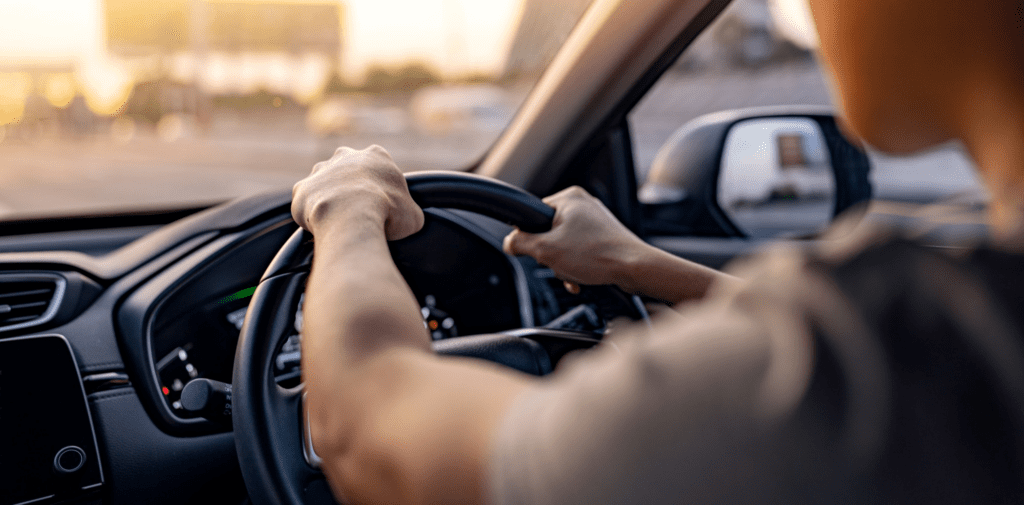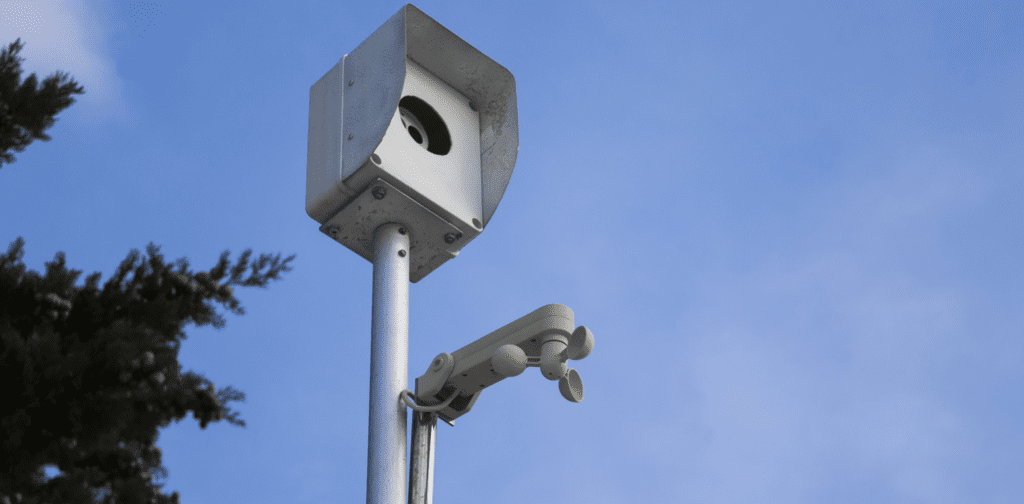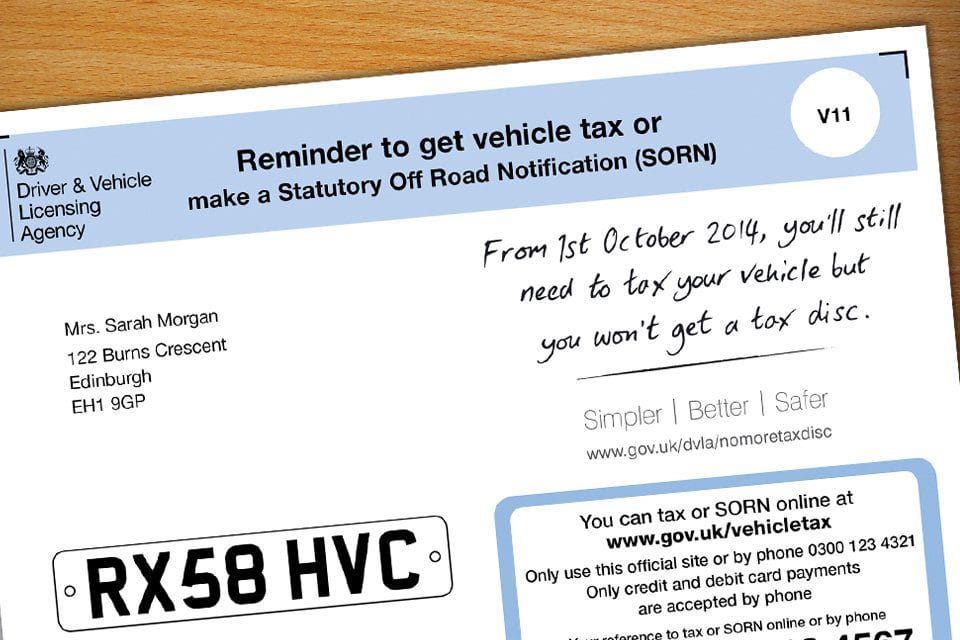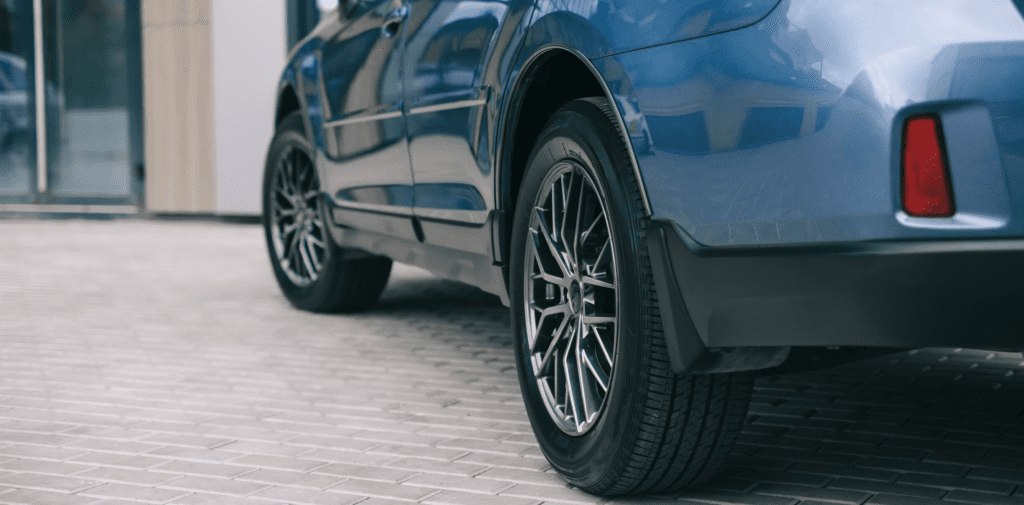
Navigating the costs of learning to drive can be daunting, especially when you realise there are more expenses awaiting you as you venture solo on the roads. Firstly, buying a car, whether it’s fresh from the factory or pre-loved, is a significant investment.
- What is vehicle tax?
- How can I qualify for a vehicle tax exemption?
- How is my vehicle tax calculated?
- How can I tax my vehicle?
- How do I cancel my vehicle tax?
- Frequently asked questions
On top of that, you need to buy the appropriate car insurance for your vehicle. As if these costs weren’t enough, there’s the vehicle tax to consider. This tax can be somewhat complex, with rates influenced by factors like the car’s registration date, engine capacity, and CO2 emissions.
But worry not! We’ve crafted a comprehensive guide on vehicle tax. Dive in to understand its computation, oversight, and the steps to tax your vehicle for the first time.
What is vehicle tax?
Vehicle tax, often referred to as Vehicle Excise Duty (VED), is a mandatory levy imposed on individuals who park or drive their vehicles on public roads.
A common misconception is its alternate name, “road tax“, which may suggest that its revenue is dedicated solely to road maintenance.

However, in reality, the proceeds from vehicle tax are allocated to various public sectors, including but not limited to education, healthcare, and housing.
Nearly all vehicles operating on public roads are obligated to pay this tax. There are, of course, exceptions. Some vehicles qualify for an exemption from the vehicle tax, but even if you’re not required to pay, you must still register for the tax.
This ensures that the vehicle is recognised as compliant, and you’ll need to provide appropriate documentation to justify your exemption.
How can I qualify for a vehicle tax exemption?
Disability Exemption
Those with certain disabilities may be eligible for a vehicle tax exemption. Qualifications for this exemption include:
- Receipt of the Higher mobility component of Disability Living Allowance (DLA).
- Receipt of the Enhanced rate mobility component of Personal Independence Payment (PIP).
- Being a recipient of the War Pensioners’ Mobility Supplement.
- Receiving the Armed Forces Independence Payment.
Remember that the vehicle should be registered under the name of the eligible disabled individual.
Exemption for Disabled Passenger Vehicles
Organisations that utilise vehicles (excluding ambulances) to transport disabled individuals can also apply for an exemption.
Historic Vehicle Exemption
Owners of vehicles manufactured prior to 1 January 1979 can seek a vehicle tax exemption. If there’s uncertainty about the manufacturing date, vehicles first registered up to 8 January 1979 still qualify.
Electric Vehicle Exemption
Electric vehicles, specifically those powered solely by an external source or an onboard electric storage battery without a connection to any power source while in motion, are eligible. However, there’s a caveat: electric vehicles with a list price exceeding £40,000 and registered post-March 2017 will be subject to an additional tax.
Mowing Machine Exemption
Rest assured mowing machines designed exclusively for grass-cutting purposes qualify for an exemption. This, however, doesn’t extend to tractors capable of towing gang mowers.
Steam Vehicle Exemption
Although it might sound like a relic from the past, if you do happen to drive a steam-powered vehicle, you’re in luck. Such vehicles are exempt from the vehicle tax.
Exemption for Agricultural, Horticultural, and Forestry Vehicles
This wide-ranging category, as defined by the DVLA, encompasses “tractors, agricultural engines, and light agricultural vehicles for off-road use.” It also includes “limited use” vehicles, which are used for brief trips between pieces of land under the same ownership.
Remember, while exemptions can save you money, always ensure your vehicle’s compliance with all regulations and maintain proper documentation.
How is my vehicle tax calculated?
Your vehicle tax is contingent on when your car was first registered to a keeper. Keep in mind, this may not be the date you bought the car, but rather the initial registration date.
For Vehicles Registered before 1 March 2001
Vehicles from this period are taxed based on engine size.
| Engine Size | 12-Month Payment | 12-Month Total (Direct Debit) | 6-Month Payment | 6-Month Payment (Direct Debit) |
|---|---|---|---|---|
| Below 1549cc | £160 | £168 | £88 | £84 |
| Above 1549cc | £265 | £278.25 | £145.75 | £139.13 |
Vehicles Registered between 1 March 2001 to 31 March 2017
These vehicles are taxed by fuel type and CO2 emissions, details of which can be found in your vehicle registration certificate or online.
| Petrol (TC48) and Diesel (TC49) Cars | |||||
|---|---|---|---|---|---|
| Band | CO2 emission (g/km) | Single 12 month payment (including Direct Debit) | Total of 12 monthly instalments by Direct Debit | Single 6 month payment | Single 6 month payment by Direct Debit |
| A | Up to 100 | £0 | £0 | N/A | N/A |
| B | 101-110 | £20 | £21 | N/A | N/A |
| C | 111-120 | £30 | £31.50 | N/A | N/A |
| D | 121-130 | £125 | £131.25 | £68.75 | £65.63 |
| E | 131-140 | £145 | £152.25 | £79.75 | £76.13 |
| F | 141-150 | £160 | £168 | £88 | £84 |
| G | 151-165 | £200 | £210 | £110 | £105 |
| H | 166-175 | £235 | £246.75 | £129.25 | £123.38 |
| I | 176-185 | £260 | £273 | £143 | £136.50 |
| J | 186-200 | £300 | £315 | £165 | £157.50 |
| K* | 201-225 | £325 | £341.25 | £178.75 | £170.63 |
| L | 226-255 | £555 | £582.75 | £305.25 | £291.38 |
| M | Over 255 | £570 | £598.50 | £313.50 | £299.25 |
| Alternative Fuel (TC59) Cars | |||||
|---|---|---|---|---|---|
| Band | CO2 emission (g/km) | Single 12 month payment (including Direct Debit) | Total of 12 monthly instalments by Direct Debit | Single 6 month payment | Single 6 month payment by Direct Debit |
| A | Up to 100 | £0 | N/A | N/A | N/A |
| B | 101-110 | £10 | £10.50 | N/A | N/A |
| C | 111-120 | £20 | £21 | N/A | N/A |
| D | 121-130 | £115 | £120.75 | £63.25 | £60.38 |
| E | 131-140 | £135 | £141.75 | £74.25 | £70.88 |
| F | 141-150 | £150 | £157.50 | £82.50 | £78.75 |
| G | 151-165 | £190 | £199.50 | £104.50 | £99.75 |
| H | 166-175 | £225 | £236.25 | £123.75 | £118.13 |
| I | 176-185 | £250 | £262.50 | £137.50 | £131.25 |
| J | 186-200 | £290 | £304.50 | £159.50 | £152.25 |
| K* | 201-225 | £315 | £330.75 | £173.25 | £165.38 |
| L | 226-255 | £545 | £572.25 | £299.75 | £286.13 |
| M | Over 255 | £560 | £588 | £308 | £294 |
*Includes cars that have a CO2 figure over 225g/km but were registered before 23 March 2006
Vehicles Registered after 1 April 2017
Newer vehicles’ initial tax payment is based on CO2 emissions. Diesel cars not adhering to the RDE2 standard for nitrogen oxide emissions will incur a higher rate.
| First Tax Payment When Registering Vehicle | |||
|---|---|---|---|
| CO2 emissions (g/km) | Diesel cars that meet the RDE2 standard and petrol cars | All other diesel cars | Alternative fuel cars |
| 0 | £0 | £0 | £0 |
| 1-50 | £10 | £25 | £0 |
| 51-75 | £25 | £110 | £15 |
| 76-90 | £110 | £130 | £100 |
| 91-100 | £130 | £150 | £120 |
| 101-110 | £150 | £170 | £140 |
| 111-130 | £170 | £210 | £160 |
| 131-150 | £210 | £530 | £200 |
| 151-170 | £530 | £855 | £520 |
| 171-190 | £855 | £1,280 | £845 |
| 191-225 | £1,280 | £1,815 | £1,270 |
| 226-255 | £1,815 | £2,135 | £1,805 |
| Over 255 | £2,135 | £2,135 | £2,125 |
After the first year, there’s a standard tax.
| Fuel Type | 12-Month Payment | 12-Month Total (Direct Debit) | 6-Month Payment | 6-Month Payment (Direct Debit) |
|---|---|---|---|---|
| Petrol/Diesel | £145 | £152.25 | £79.75 | £76.13 |
| Electric | £0 | N/A | £0 | N/A |
| Alternative | £135 | £141.75 | £74.25 | £70.88 |
Vehicles with a list price above £40,000 pay an extra £320 annually for 5 years.
| Fuel Type | 12-Month Payment | 12-Month Total (Direct Debit) | 6-Month Payment | 6-Month Payment (Direct Debit) |
|---|---|---|---|---|
| Petrol/Diesel | £465 | £488.25 | £255.75 | £244.13 |
| Electric | £320 | £336 | £176 | £168 |
| Alternative | £455 | £477.75 | £250.25 | £238.88 |
Stay updated with vehicle tax regulations to ensure compliance and avoid penalties.
How is Vehicle Tax Monitored?
Historically, vehicle owners were required to display a visible paper tax disc on their windscreen, indicating that the respective vehicle was duly taxed.
This system necessitated both the DVLA (Driver and Vehicle Licensing Agency) and law enforcement to manually inspect each disc—a process that was cumbersome and inefficient.
Recognising the inefficiencies of this system, in October 2014, the DVLA transitioned from this paper-based approach to a comprehensive electronic database. This transition was aimed at streamlining the monitoring process and bolstering enforcement mechanisms.
Today, the enforcement of vehicle tax compliance relies on the synergy between Automatic Number Plate Recognition (ANPR) cameras and the DVLA’s electronic vehicle database.

Through this integrated system, police officers can swiftly identify vehicles that have not been taxed. This technology-driven approach is analogous to the systems employed to detect other traffic violations, such as speeding.
When Is the Vehicle Tax Due?
Upon acquiring a vehicle, you must get vehicle tax immediately. Any vehicle tax paid by a previous owner doesn’t get transferred to the new owner.
So, even if the prior owner had paid for a full year of tax, the subsequent owner must still pay the tax from the point of purchase. Dealerships typically facilitate this process during a vehicle sale, ensuring that the new vehicle owner is compliant.
However, if you’re purchasing from a private seller or in instances where the dealership doesn’t assist with this, you’ll need to manage this obligation independently.
Vehicle owners have the flexibility to pay their vehicle tax either semi-annually (for 6 months) or annually (for 12 months).
To assist vehicle owners in staying compliant, the DVLA sends reminders notifying them of their vehicle tax’s impending expiration, allowing ample time for renewal.

How can I tax my vehicle?
Taxing your vehicle is a straightforward process. Begin by locating your vehicle reference number, an essential code for initiating the tax procedure. This number can be sourced from multiple places:
- A recent DVLA reminder or last-chance-warning (known as a V11)
- Your vehicle’s log book (V5C)
- The new keeper slip, especially handy if the car’s a recent purchase.
Armed with your reference number, you’re all set to tax your vehicle online. During the online process, payment methods include credit or debit card and Direct Debit.

For those less tech-savvy or preferring more traditional methods, taxing over the phone is an option too. Dial the vehicle tax service at 0300 123 4321 to proceed, but remember, Direct Debit payments aren’t possible through this channel.

Additionally, many Post Offices provide vehicle taxing services. Unsure if yours offers this? Use the Post Office branch finder tool to clarify. If you decide on this route, ensure you have your payment ready, or your bank details for Direct Debit arrangements.
Also, don’t forget your vehicle log book or new keeper slip to verify your reference number.
Should you misplace your reference number or associated documents, you’ll need to request a new log book. Uncertain about your car’s tax status? The DVLA’s tax checker tool provides immediate clarity.
What if I don’t use my car that often?
For those who only occasionally hit the road, ongoing expenses like insurance, fuel, and vehicle tax can seem disproportionate. While there’s no partial tax option based on usage, some alternatives might ease the financial burden.
Consider a shared car agreement. By partnering with someone like a friend or neighbour, costs like vehicle tax can be divided, lightening the individual load.
If you want to have a break from driving, think about applying for a Statutory Off Road Notification (SORN).
This declaration allows you to stop payments on both vehicle tax and insurance. It’s an apt choice for those considering a prolonged break from driving. However, there are conditions:
- Once a SORN is in place, the vehicle can’t be driven until it’s re-taxed.
- Your vehicle must be parked in a garage, on a driveway, or on private land. Public roads are a no-go.
Always weigh the pros and cons to determine the best path for your specific situation.
How do I cancel my vehicle tax?
If you find yourself needing to cancel your vehicle tax, the DVLA has set protocols in place for specific scenarios. Successfully adhering to these will result in the DVLA terminating your vehicle tax and subsequently refunding you for any entire months you’ve already covered but won’t be using.
Circumstances in which you can cancel your vehicle tax:
- Change in Ownership: If you’ve sold or transferred your vehicle to a new owner.
- Off-Roading: When you’ve registered for a Statutory Off Road Notification (SORN).
- Vehicle Written Off: Should your insurance company declare your vehicle as a total loss.
- Vehicle Scrapped: If you’ve taken your vehicle to a scrapyard for disposal.
- Theft: In unfortunate events where your vehicle gets stolen.
- Relocation: If your vehicle has been permanently exported out of the UK.
- Tax Exemption: Instances where you’ve recently obtained an exemption status from vehicle tax.
After you’ve updated the DVLA on your specific scenario, they will stop your vehicle tax and stop any ongoing Direct Debit (if that was your chosen payment method). Subsequently, they will mail you a cheque, reflecting the refund amount for any full unused months.
What Should You Do Before Notifying DVLA?
Before proceeding, ensure the details on your vehicle log book (V5C) – primarily your name and address – are accurate. DVLA relies on this information for processing refunds. If there are discrepancies, it’s imperative to amend your log book first.
You won’t be reimbursed for any credit card transaction fees, the 5% surcharge incurred on some Direct Debit payments, or the 10% surcharge associated with singular 6-month payments.
Ready to request a refund? Cancel your Vehicle Tax here.
Refund Delays?
If 6 months lapse without any sign of your refund cheque, promptly contact the DVLA. Should the cheque arrive but bear incorrect details, return it to the DVLA with the correct information appended:
Refund Department
DVLA
Swansea
SA99 1AL
Always keep a record of communications and transactions to ensure a smooth process.
Frequently asked questions
Yes! Avoiding vehicle taxation isn’t a viable option. Given the advancements in technology, it’s inevitable that you’ll be detected if you drive an untaxed vehicle.
Getting caught can lead to significant penalties, potential points on your licence, or even a driving ban.
The only time it is permissible to drive an untaxed vehicle is when you’re en route to a scheduled MOT appointment.
It’s crucial to have the MOT pre-arranged, as you need evidence that you’re genuinely attending an MOT test and not merely using it as a cover for unauthorised driving.
When you sell your vehicle, the tax doesn’t transfer to the new owner. Instead, you’ll be reimbursed for any complete months of unused tax.
Similarly, if you declare your vehicle as off-road, you’ll receive a refund for the unused portion.
Simply use the DVLA’s vehicle tax rate checker. You’ll need the date when your vehicle was first registered. If you have your reference number available, you can also opt for the DVLA’s vehicle information service for the same information.
Typically, dealerships will assist you in setting up your vehicle tax either online or over the phone before you drive away with your newly acquired vehicle. However, if for some reason they don’t, you can easily manage the process on your own.
To check the tax status of your vehicle or to see if it’s declared off-road, simply use the DVLA’s vehicle tax checker. Do note, however, that updates to the records might take up to 5 working days to reflect.




